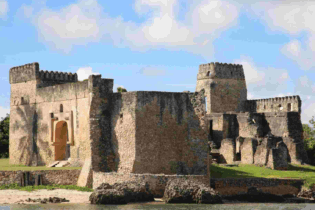Dar es Salaam: As the East African Community (EAC) braces for major transformation in terms of trade and movement of people, the regional body faces the challenge of an increase in population traffic through transport corridors, border posts and ports, posing a high risk of communicable diseases such as HIV/Aids. Addressing delegates when opening a two-day International Organisation for Migration (IOM), Regional Consultation on Coordinated Scale-up Comprehensive Health Programming along Transport Corridors in East Africa, Permanent Secretary in the Ministry of Home Affairs, Mr Mbarak Abdulwakil, said there was a need to find ways to negate the potential negative impacts on health.
Mr Abdulwakil said the consultation would provide stakeholders an opportunity to engage in discussions on the potential risks which will arise due to the scale-up of transport corridors and one-stop border posts (OSBPs). “We should share, discuss and reflect on the impending regional integration and scale-up on transport corridors and share experiences in order to develop sustainable holistic solutions and safeguard our people,” he explained.
Among issues to be discussed include to identify and reach consensus on the roles and responsibilities of key players providing health interventions along the transport corridors in EAC and seek donor engagement.
Others are to review current strategic information and programmatic interventions along the transport corridors, particularly at borders in East ad Southern Africa and to establish next steps for addressing health within the transport corridor in the region.
The North Star Alliance (NSA) Regional Director of EAC, Ms Eva Mwai, said the alliance had been providing health services to hard-to-reach people, especially those at high risk such as truck drivers and sex workers and primary care to communities with limited or no access to medical services.
Ms Mwai said the alliance had established more than 30 one-stop border post (OSBPs) clinics in Africa. In Tanzania the OSBPs are situated along the central corridor including, in Mwanza, Kagongwa, Tunduma and Kahama.
She said IOM had helped in providing information from researches which had helped facilitate the alliance’s work in addressing issues of HIV/Aids. “This is important because there are so many challenges facing long-distance truck drivers, some get infected and might not have proper places to access medical services; that is why we established the OSBPs along the corridors,” she explained.
Source: Tanzania Daily News
Source URL: http://allafrica.com/stories/201310010145.html?viewall=1
The Vice-Chairman of the Tanzania Drivers Association (TDA), Mr Mohamed Abdulkadir, said bureaucracy at some of the border posts, including Tunduma, was among reasons that led to drivers engaging in unprotected sex. Mr Abdulkadir said sometimes drivers spent more than two weeks at the borders waiting for the documentation to be processed, making them sitting ducks for commercial sex workers.
Citing Tunduma as an example, Mr Abdulkadir said it led in bureaucracy due to a poor system of processing documents, consequently drivers were forced to stay longer at the border. He, however, noted that IOM had provided education to long-distance truck drivers on how to protect themselves from getting infected.He added that there were several one-stop border posts along the central corridor which drivers use to check and get counselling. Mr John Mathenge, Kenya Country coordinator for Africa Sex Worker Alliance, said responsible authorities should discuss with all vulnerable groups on the way forward in fighting HIV/Aids instead of pointing fingers and condemning the groups. He said it was hypocrisy when responsible authorities received money from donors targeted at assisting vulnerable groups fighting HIV/Aids and instead pointing accusing fingers at such groups, including commercial sex workers. * Copyright © 2013 Tanzania Daily News. All rights reserved. Distributed by AllAfrica Global Media (allAfrica.com).Source: Tanzania Daily News
Source URL: http://allafrica.com/stories/201310010145.html?viewall=1







